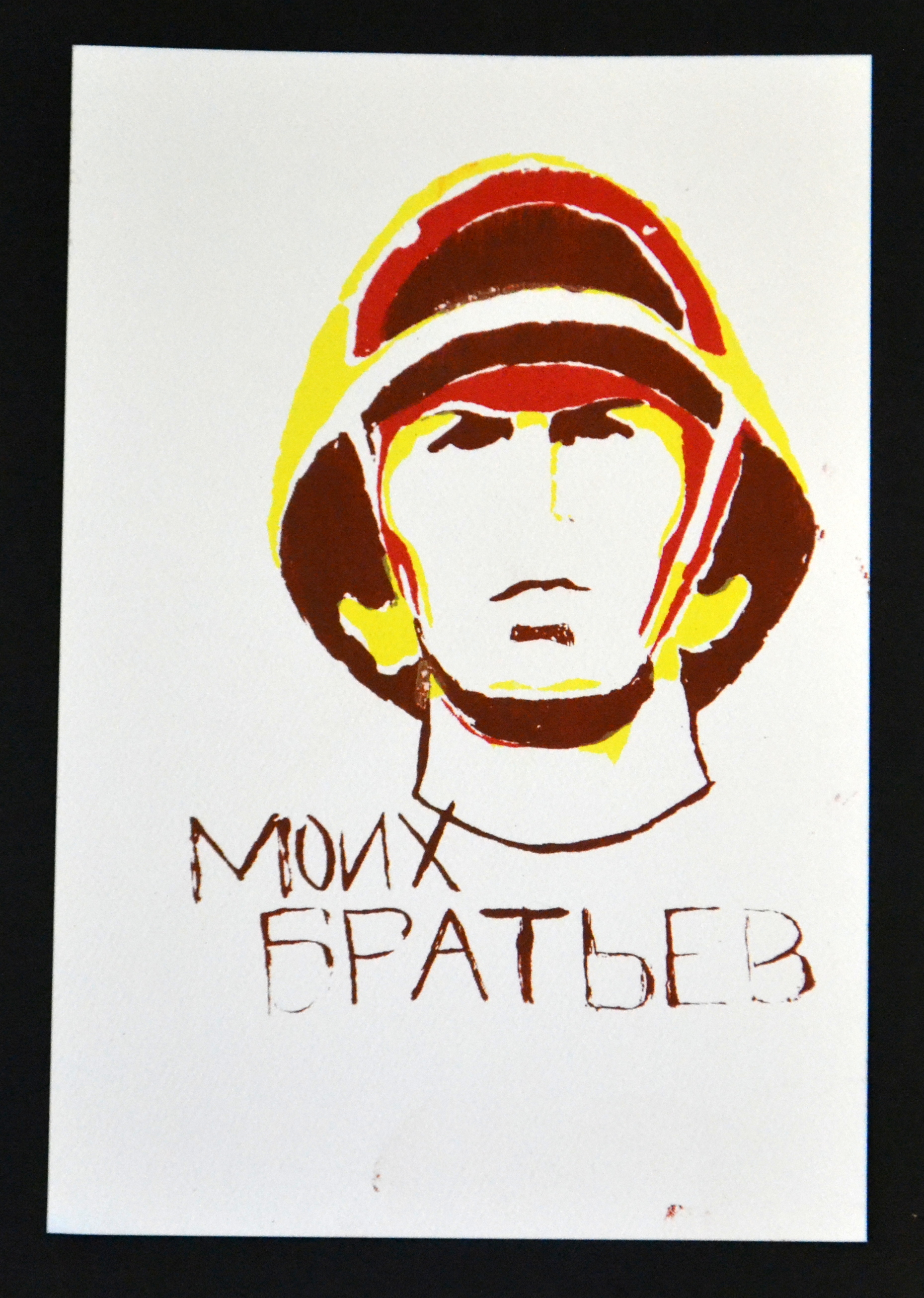Name of Project: Emulsion Screenprint
Grade Level or Age of Participant: High School, Junior Senior
School, Teacher and Classroom: Perpich, Graham Judd, Screenprinting
Teaching Artist: Colleen McLaren
Visual Arts Content or Standards
9-12 Artistic Foundations
Analyze how the elements of visual art including color, line, shape, value, form, texture and space; and principles such as repetition, pattern, emphasis, contrast and balance are combined to communicate meaning in the creation of, presentation of, or response to visual artworks.
Evaluate how the principles of visual art such as repetition, pattern, emphasis, contrast and balance are used in the creation of, presentation of, or response to visual artworks
Overview of Project
Students will create an original two layer (or more) screenprint using emulsion coated screens exposed to light. They will use ink on transparencies as stencils to expose images. Stencils should be hand done not printed from an existing image.
“Big Ideas”/ Essential QUESTION(s)
How is human emotion expressed in art and design?
How does printmaking connect to the human experience?
How does craft affect the perception and understanding of imagery?
Student Outcome Objectives
Students will:
1. Learn to use the exposure unit
2. Create and practice making an edition
3. Create a 2 layer print with content
4. Create an original edition of prints from and original idea and the elements and principles of design
Prior Knowledge
Students need to have introductory experience screenprinting.
Lesson Preparation Timeline
Create a presentation of example images and the project, and create assignment sheets.
Coat two screens ahead of time for the demo and transparencies to expose onto the screen at least two days before presentation.
Assignment sheets with assignment description, objectives and instructions
Examples of Artwork
Personal artwork, artwork of college peers, and artist work. Work will demonstrate both what will can go wrong in the process as well as quality prints.
Additional Resources
http://www.theartofdoingstuff.com/how-to-screen-printsilkscreening-at-home
Assessment
Critique the week after projects are completed focusing on the use of elements and principals of design, originality of ideas, intersection of technique and content, screen printing errors and oversights, quality of technique and craft.
Materials
Pencils
Sketchbooks (students personal)
Screens
Photo emulsion
Dark room
Scoop coater (for applying emulsion to screens). Fits too screen
Exposure unit
Transparencies
India ink
Screen printing table/jig
Paper
Screenprint ink
Spatula/spoon to scoop ink
Squeegee-appopriate size for screen
Learning Activities and Timeline
Pass out assignment sheets, 5 Min
Introduce the project through presentation, show examples of work, 15-20 Min
Give demo on creating transparencies, 5 Min
Show how to use exposure unit, 15-30
Rinse screen. STRESS THE IMPORTANCE OF THIS, 5 min
Make a print when screen is dry
Students ideate and sketch rest of class, talk about ideas individually, the remaining time period
Last 10 minutes, come together, show print, talk about ideas, 10 Min
Teaching Artist Reflection
Students may not pay attention for instructions and get confused. Instructive signage will assist with this.
Students may not all get to see what is going on due to a camped space. If this is the case, demos could take place in smaller groups of 5-8.
Talk throughout the demo and have a different student assist with each step to make the demo easier and have students as knowledgable resources throughout the project.
http://www.cascaeducation.ca/files/proAstro_payattention.html
Students work:




















